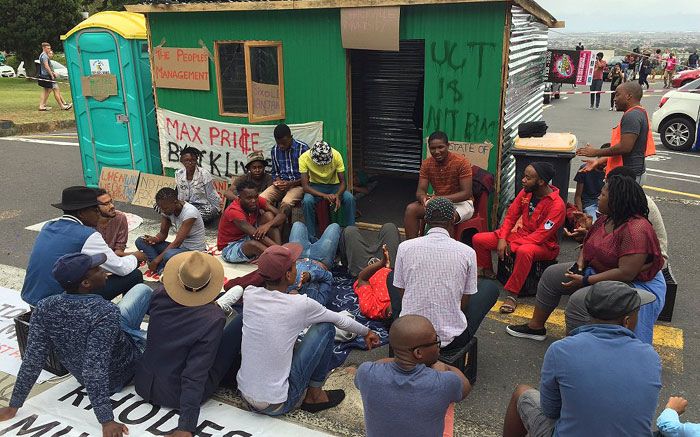The Sharpeville massacre was a turning point in the history of South Africa, marking a major shift in the struggle against apartheid. On 21 March 1960, thousands of black South Africans gathered outside the Sharpeville police station to protest against the apartheid pass laws, which required them to carry identity documents at all times. Police opened fire on the unarmed crowd, killing sixty-nine people and injuring hundreds more. The incident resulted in the largest number of South African deaths (up to that point) in a protest against apartheid. It also came to symbolise that struggle.
Sharpeville, a black suburb outside of Vereeniging (about 75 km south of Johannesburg), was untouched by anti-apartheid demonstrations that occurred in surrounding towns throughout the 1950s. By 1960, however, anti-apartheid activism reached the town. In 1960, Robert Sobukwe’s Pan-Africanist Congress (PAC), a political organisation that opposed the apartheid regime, called for a national day of protest against the Pass Laws and organised the town’s first anti-apartheid protest. In order to reduce the possibility of violence, he wrote a letter to the Sharpeville police commissioner announcing the upcoming protest and emphasising that its participants would be non-violent.
Both the ANC and PAC embarked on a feverish drive to prepare their members and Black communities for the proposed nationwide campaigns. The PAC called on its supporters to leave their passes at home on the appointed date and gather at police stations around the country, making themselves available for arrest. The campaign slogan was “NO BAIL! NO DEFENCE! NO FINE!” The PAC argued that if thousands of people were arrested, then the jails would be filled, and the economy would come to a standstill. These protests were to begin on 21 March 1960.
An estimated 7,000 South Africans gathered in front of the Sharpeville police station to protest against the restrictive pass laws. Nearly 300 police officers arrived to put an end to the peaceful protest. As they attempted to disperse the crowd, a police officer was knocked down and many in the crowd began to move forward to see what had happened.
Police witnesses claimed that stones were thrown, and in a panicked and rash reaction, the officers opened fire on the crowd. Other witnesses claimed there was no order to open fire, and the police did not fire a warning shot above the crowd. As the protesters tried to flee the violent scene, police continued to shoot into the crowd. Sixty-nine Africans were killed and 186 were wounded, with most shot in the back.
When the news of the Sharpeville Massacre reached Cape Town a group of between 1000 to 5000 protestors gathered at the Langa Flats bus terminus around 17h00 on 21 March 1960. This was in direct defiance of the government’s country-wide ban on public meetings and gatherings of more than ten persons. The police ordered the crowd to disperse within 3 minutes. When protesters reconvened in defiance, the police charged at them with batons, tear gas and guns. Three people were killed, and 26 others were injured.
The Sharpeville Massacre awakened the international community to the horrors of apartheid, leading to widespread international condemnation of the system and setting the stage for the eventual downfall of the apartheid government. The uproar among South Africa’s black population was immediate, and the following week saw demonstrations, protest marches, strikes, and riots around the country, many of which were ruthlessly and violently crushed by the South African police and military. On March 30, the South African government declared a state of emergency which made any protest illegal. The ban remained in effect until 31 August 1960. During those five months, roughly 25,000 people were arrested throughout the nation. The South African government then created the Unlawful Organisations Act of 1960 which banned anti-apartheid groups such as the Pan Africanist Congress and the African National Congress.
Dr. Verwoerd praised the police for their actions, detaining prominent anti-apartheid activists including Nelson Mandela. Robert Sobukwe and other leaders were arrested and detained after the Sharpeville massacre, some for nearly three years after the incident. This move only fuelled the anti-apartheid movement and made the struggle against apartheid more determined.
The South African government’s repressive measures in response to the Sharpeville Massacre, however, intensified and expended the opposition to apartheid, ushering in three decades of resistance and protest in the country and increasing condemnation by world leaders. The incident also led to the formation of the United Nations Special Committee Against Apartheid. The United Nations Security Council passed Resolution 134, which condemned the South African government’s actions and called for an end to apartheid. The UN resolution was adopted with nine votes; France and the United Kingdom abstained.
Domestically, the Sharpeville Massacre had a profound impact on the anti-apartheid movement. The ANC and other organizations responded with increased militancy, leading to the formation of the Umkhonto we Sizwe (Spear of the Nation), the military wing of the ANC. The event also led to increased international pressure on the South African government to end apartheid, and eventually, the apartheid regime fell in 1994, with the election of Nelson Mandela as the country’s first black president.
Karibu! Staff compiled this article using the following sources:
1. SHARPEVILLE MASSACRE, Blackpast, Sharpeville Massacre • (blackpast.org);
2. Sharpeville Massacre: The Tragic Event that Fuelled the Fight Against Apartheid in South Africa, Talkafricana, Sharpeville Massacre: The Tragic Event that Fuelled the Fight Against Apartheid in South Africa – TalkAfricana
3. Sharpeville Massacre, 21 March 1960, South African History Online, Sharpeville Massacre, 21 March 1960 | South African History Online (sahistory.org.za)


 Download PDF
Download PDF
